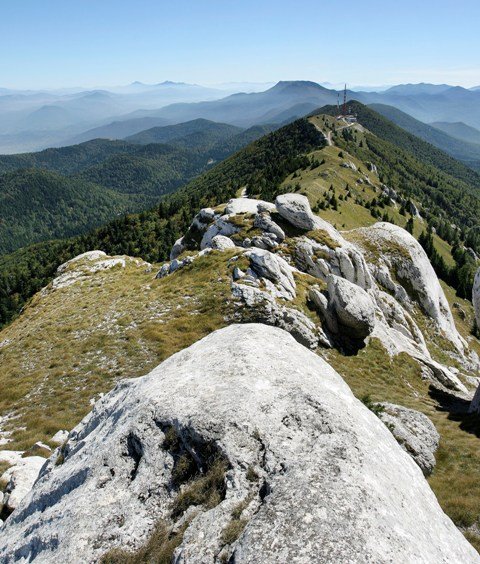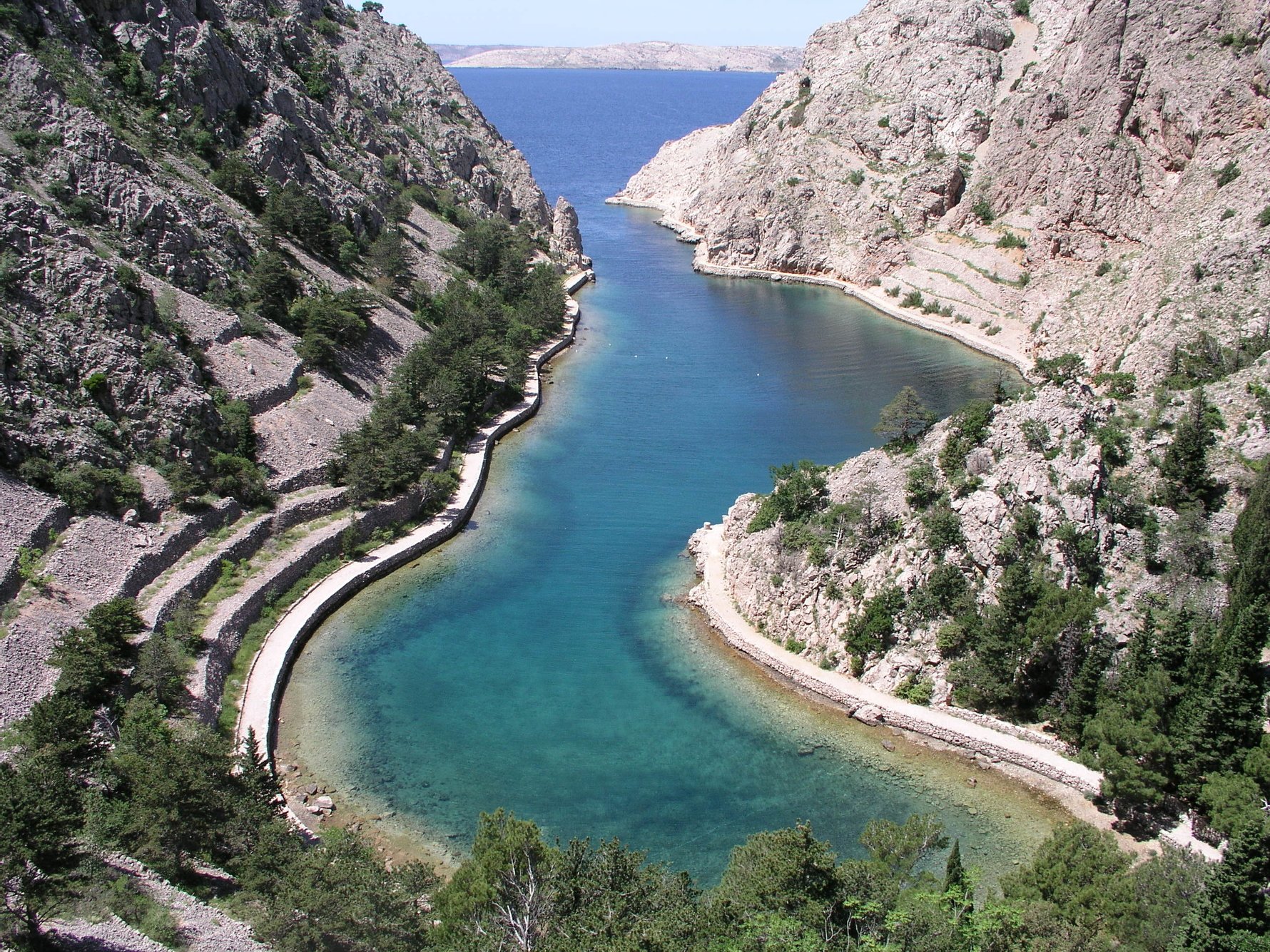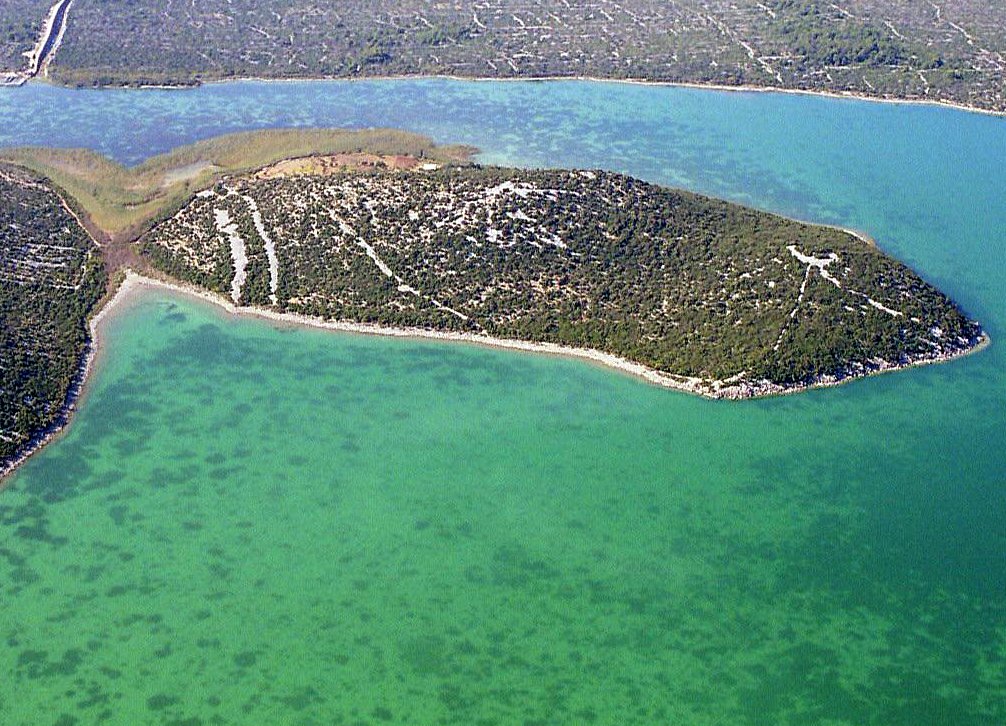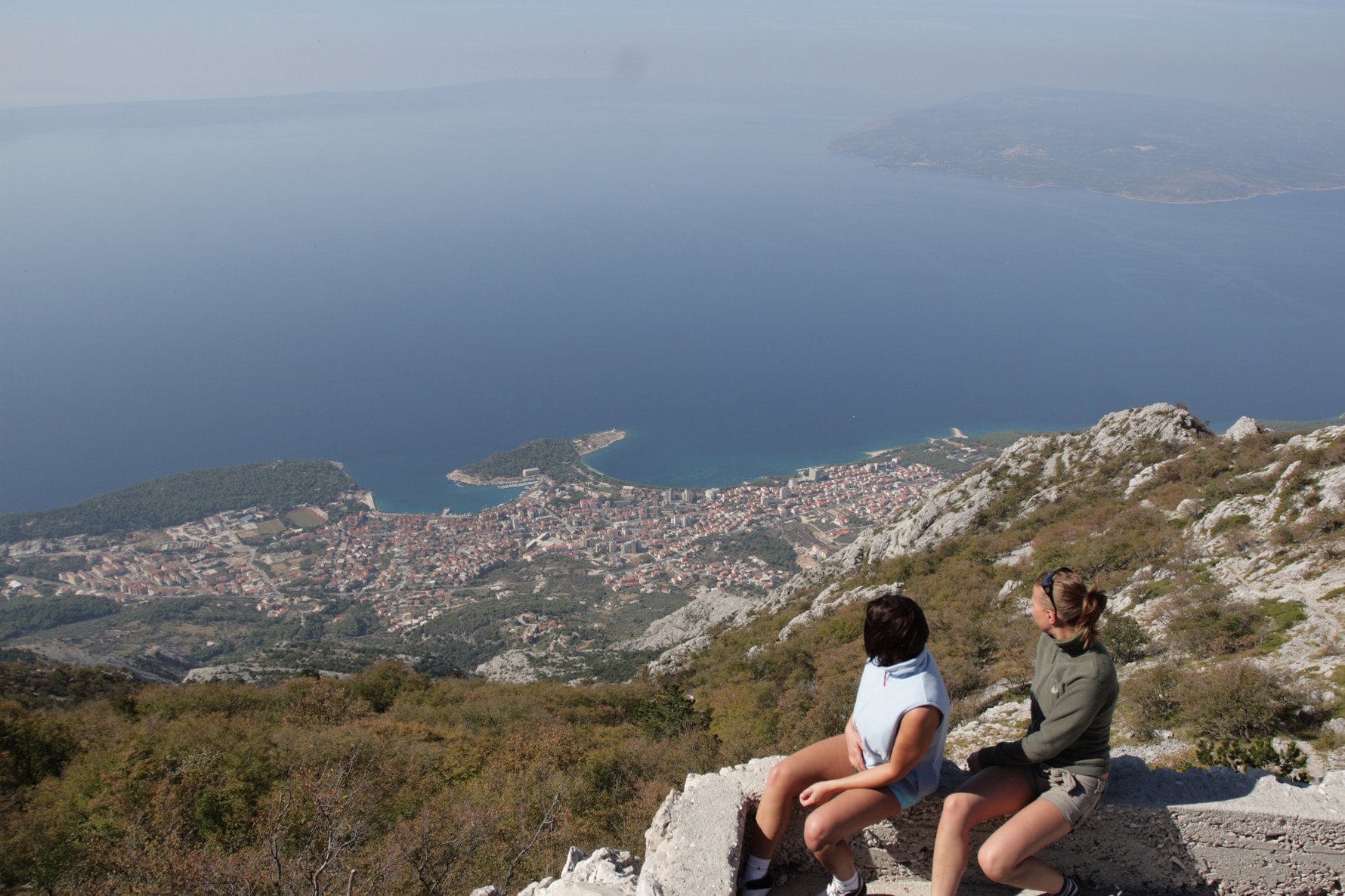Twenty three percent of Croatia is covered by forest. Unfortunately, as is common throughout much of the world, a lot of it is under threat; up to 50% of wood land is having acid rain dumped on it courtesy of their dear neighbours. Added to such rough treatment are the one thousand hectares per year that are torn down for logging or building projects. Eco warriors should also be armed with water buckets as in the last 25 years, fires have destroyed a whopping 7 % of Croatia’s forests. With such a wealth of potential, cringing under these risks, it is surprising that only 7.5% of the entire state territory is protected by national park status, although there is intent for that figure to rise to 15% in the near future. Hence a myriad of opportunities for those wishing to walk, breathe or explore more active pursuits in the summer shine.
Kopački Rit
In the far east of the country, tucked into a corner past Osijek known as Baranja where the Drava and Danube rivers meet is the national park Kopački Rit; one of the largest natural marshes in Europe. This large flat area acts as a flood plain for the two rivers. When not completely bogged down by by these bullies, the area includes a myriad of channels and lakes that act as a conduit for the swapping of juices between the two larger bodies of water.Naturally these conditions ensure a richness of soil and nutrients, which support hundreds of varieties of flora. Meanwhile, the generally awkward environment keeps out the more destructive elements of the animal kingdom; that’s us of course; making it the perfect haven for many species of fauna. The bird life in the area is especially attractive, including heron, storks and wild duck, who battle it out for the highest stoop with rare falcons and eagles.
Evidently humans would never stand for being left out altogether and there are a few small villages in the park. In Kopačevo one can see traditional farming in the Baranja style abd study ancient crafts such as the construction of fishing nets and traps or even how to cook up the quarry once your nets and traps have done their wicked deeds. Moving onwards the determination of the Hapsburgs to invade all corners of central Europe is evidenced by the Tikveš manor house. However, since the mid 1990s the house has been closed to the public.
Medvednice and Žumberak
Thankfully the winter is now over, which means that no-one has to carry on pretending that Medvednice is a skiing resort of any description. Certainly it may be extremely convenient to hop on bus N°102 at Britanski trg, get off at the bright yellow Šestine church and then walk 1km directly north to the base of the mountain. Or even from Trg Jelaciea take tram N°14 to the end (Mihaljevac) and then N°15 to the end (Dolje), then walk in a north-west direction about 100m until you see the tunnel at the entrance of the park then walk 1km to the base of Sljeme and finally take the ZET cable car that shuttles up the mountain – but the slopes are small and busy and really provide little more than a couple of hours diversion.No, it is in the warmer parts of the year that this mountain range; covering an area of 270km2 and boasting the over-skied Sljeme at 1035m as its highest peak; really comes into its own. Instead of cramming into the admittedly excellent public transport in order to get up here why not make the journey part of the great adventure and walk up – 1.5 to 2.5 (depending on your propensity to stop for fizzy drinks/diving behind bushes to get rid of fizzy drinks/general laziness) will get you up here and have you feeling entirely worthy and deserving of that stop-off in one of the many pubs that serve the hikers and mountain bikers up here.

PD Risnjak, Photo by Nina Špoljarević
The mountains really start the second one steps north of the line marked by Ilica and Vlaška through the centre of the city. Various suburbs snake up the spines of the foothills but then peter out to be replaced mainly by forest but also by villages, vineyards and orchards.
Apart from gallivanting in all of nature’s fresh glory there are more than a couple of other attractions in the vicinity for your pleasure. As mentioned, lesser-spotted cosy inns and lodges populate the slopes around these parts. Other distractions include the old salt mines near the Slano stream in the eastern part of the park, Rudarski vrt (Miner’s Garden) where the Zrinski family ran their 17th century silver mine and the Veternica cave; a large resource of Neanderthal remains and cave bear fossils, the majority of which are on display in the Croatian Nature Museum in the city, although some can still be seen in the cave walls.
Around 70m from the entrance is a large chamber known as the ‘Zagreb Underground’ which is used for concerts. Should the performance be particularly bad then we suggest the audience can throw the minstrels down the large hole that extends for 7km into the mountain, the entrance to which is found further on in the cave. To get to Veternica Cave: Tram No 6 west to the end (Črnomerec), then bus No 124 north to the end of the route (Dubravica). Walk 500m to the end of the street and the cave is behind the houses.
Joined on to the south-west tip of the park begins another mini park; Žumberak. Nestling between Medvednice and Samobor on the one side and Slovenia on the other, this lesser known and visited range of mountains, with Sveta Gera (1178m) as its peak is perfect for exploring small authentic villages. Ancient feudal castles and old hill forts supply another outlet for your historical yearnings and desire to really get to grips with the real deal. Numerous gritty village pubs and restaurants are there to acquaint you with the best of this fertile region’s culinary delights, especially venison and freshwater fish or the excellent Plešivičko wine.

Pleševica, Photo by Ivan Šmuk
Lonjsko Polje
When travelling down the main highway from Zagreb towards Slavonski Brod, should you feel the need to go flying off the road on a sharp bend then we suggest you do this around Kutina and head for the right, as then you will have a lovely soft landing, although you may get a little damp, as you’ll be landing in a swamp – Lonjsko polje. The 506km2 of meadows and forests are grazed alternatively by cattle and by fish, depending on whether the area is flooded or not – and in spring it will be. The area contains three marshes and navigable canals.The area has a rich variety of birds and provides sightings of herons and cormorants amongst others. The main attraction in this sense is the ‘stork village’ of Čigoč. The 'New Zeland of the stork world' so to speak, the village is home to 200 stork families who have built 45 nests atop the 74 houses which house 120 human inhabitants. Happily enough for this issue of IYP, the best time for nosily intruding upon this colony of birds is between March and August. The Information Centre is at No 26. Here you can rent telescopes in order to get a better view of mum getting the kids fed and washed in time for dad getting home from a hard day's er... storking(?). Whilst the storks have many home comforts there are few for you visitors. We advise you not to wear your latest Dolce and Gabanna but something a little more appropriate for sloping about in swamp land. Also some mosquito spray may be handy. Malaria tablets, machetes and a troupe of elephants for carrying your supplies throught the jungle are of course optional extras for the more serious explorer. Absolutely necessary however are food and drink supplies as Čigoč offers no refreshments, and the information centre does not rent out guns – and shooting stork for dinner will not win you any friends. Nearby there is a birdwatching reserve where you can watch more storks as well as eagles.
Risnjak
Glowering above the city of Rijeka, in the densely forested Gorski Kotar region, are the primeval forests, mountain meadows and karst formed peaks of Risnjak National Park. This range of mountains, from which can be viewed the Julian Alps and the Adriatic is by far the wildest and most untouched in the country – mostly thanks to the somewhat inhospitable climate; it has an average temperature of 12.60 in July. This of course makes it the perfect location throughout May for Marohlinijaha – or in other words a month long dandelion picking contest.Whilst wandering around with head bent to the ground looking for the little monsters don’t forget to raise your view to watch for bigger monsters. The park is a haven for deer, bears, wildcats and lynx (ris) – from which the park takes its name. Wolves and wild boar also put in an occasional appearance.
The Information office for the park is in Crni Lug, a small village that perches at 724m above sea-level (no mean feat with the sea around 25km away) and 12km from Delnice – the main regional town. From the villages of Razloge or Kupari, small winding paths can be followed up to the source of the Kupa river. From the jagged karst the water wells up into a lake and then tumbles downwards through the ‘valley of the butterflies’.
Učka
The forested slopes of Mount Učka offer a variety of ways to spend your free time in the open air. Učka is a nature park with 50 hiking trails and 8 mountain bike trails. The park boasts a wealth of wildlife and offers some of the best views around: you can see the entire Kvarner gulf with its islands laid out at your feet, and on a clear day the view south extends as far as the Velebit mountain range.Velebit
With impressive peaks and chasms, karst landscapes and impenetrable forests, the Northern Velebit is a mosaic made up of the most diverse habitats, which is why the Northern Velebit was proclaimed a Nature Park. The Northern Velebit is an ideal place to visit for an active holiday. Among the best-known locations in the Nature Park are Zavižan, the Velebit Botanical Gardens, the Premužić Trail, Štirovača, Alan and Lubenovac.
Zavartnica, Photo by Nature Park Velebit
Zavižan and Alan have open grassy spaces, thick forests and huge limestone boulders, surrounded by the peaks offering magnificent views of the sea and the Lika region. In the Velebit Botanical Gardens you can enjoy the wealth of the Velebit flora. Štirovača is an area of exceptionally thick forests of spruce and fir and is home to the only wetland in the Park. Lubenac, a spacious Velebit grassland, has numerous ruins of shepherds’ cottages and dry stone walls which bear witness to peoples’ lives in times past. The Premužić Trail traverses the entire Velebit range, passing through incredible karst landscapes, and is an incredible feat of engineering.
At Alan you can stay in renovated shepherds’ huts, experience the traditional way of life and learn about the natural environment. The renovation of the huts has made possible the reintroduction of livestock farming as a measure for preserving biodiversity.
To learn more and buy entry tickets, Velebit House, open all year, is an information centre located in the village of Krasno. An especial attraction is the experience of entering a chasm using a special “lift”.
Paklenica
The Paklenica National Park lies just north of Zadar within the Velebit mountain range.Two streams,the Velika and Mala Paklenica, carve their way through the soft limestone leaving gorges with cliffs up to 400m high, and fascinating rock formations characteristic of karst territory. The scenery is incredible: the interior is unexpectedly lush due to large quantities of pure spring water, allowing dense forests and lush meadows to flourish. Local residents include sparrowhawks, chamois, wild boar, brown bears, wolves and lynx.The park is a favourite destination for hikers and climbers. Over 150 km of hiking trails include the walk from the park entrance through the Velika Paklenica Canyon to the Paklenica Mountain Hut (about 2 hours), though there are many more demanding routes. The park administration publishes excellent maps. Mountain hut accommodation is available – reserve in advance on (+385-23) 30 16 36 or e-mail: planinari.paklenica@gmail.com. There is also a campsite with a beach (prices are on www.np-paklenica.hr). Starigrad, the town at the park's entrance, has excellent pebble beaches and a number of restaurants that offers dalmatian specialities.
Vransko jezero
This lake, just south of Biograd, provided the water supply for Zadar since Roman times, and is a pristine Nature Park, with a rich stock of birds and aquatic life. As such, it's a mecca for fishing and birdwatching. The later is only allowed outside borders of the Ornithological reserve which takes up the northern part of the lake. The park is encircled by more than 50 km of bike trails and thus popular among the bicyclists. Biking routes get hilly on the eastern coast of the lake. The visit to the Park makes a nice break from the hubbub of the coast.
Photo by Nature Park Vransko Jezero
Telaščica
Although it's easily accessible from Zadar by boat, Croatia's “Long Island” is rather far out to sea, and so remains one of those few places where you can enjoy tranquillity even in high season.A trip to the Telaščica Nature Park is an unmissable part of a visit to Dugi Otok – it’s within biking distance from Sali. Telašćica Bay is a 8km deep inlet dotted with bays, islets and cliffs. A spectacular saltwater lake lies next to the bay – the water is warm and you can swim there. Legends abound about hidden treasure and ancient inhabitants with five horns on their heads. More visible treasure is the wildlife that abounds there, from pine to fig to olive to moufflon (a kind of wild sheep). Although the park is not commercialised, there are facilities for tourists providing fresh fish and local wine. Paradise indeed.
Biokovo
The Biokovo Nature Park covers most of the mountain range and has a number of information centres and educational trails. Since it is a managed park, you are required to buy a ticket at the entrance on the Makarska – Vrgorac road. You can drive up there, but the best way to explore it is to enjoy a good long hike. Just a couple of precautions: the terrain is rugged – wear strong shoes or hiking boots. The summer heat and sun can be overwhelming: set off at sunrise, and take a hat, sun protection and plenty of water. Outside of the summer, avoid setting off if wind or rain is forecast: the bura (north wind) can reach hurricane force.
Photo by Nature Park Biokovo





Comments